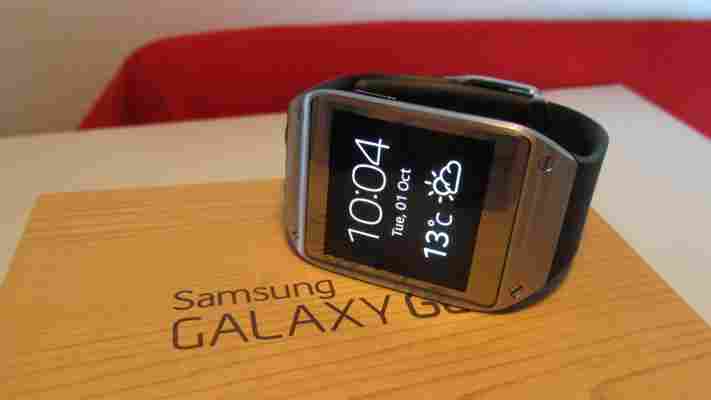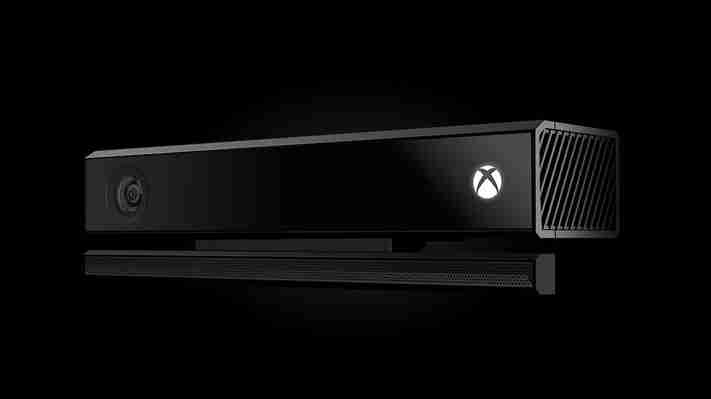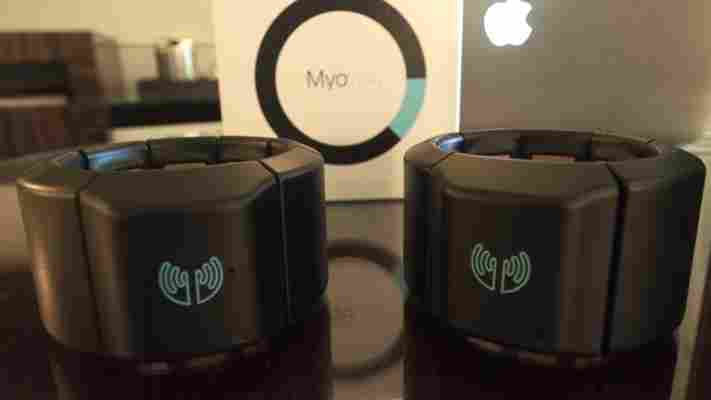Mobile World Congress is next week, but there’s still time for one more teasing leak before the world’s biggest mobile industry event kicks off. The ever-active @Evleaks has shown what are claimed to be two new Samsung Galaxy Gear smartwatch models.

While we fully expect a new Gear to be announced at MWC, this leak suggests there are two versions in the pipeline. Interestingly, @Evleaks also suggests that the new models will no longer be branded ‘Galaxy Gear’ , with Samsung instead opting for the ‘Gear Neo’ product name.
There’s been talk that the Korean electronics giant’s second stab at a smartwatch will not be based on Android, using the Linux-based Tizen platform instead, and the subtle branding change could reflect that. Two different models may also hint that Samsung will respond to claims that the original Gear was over-priced by introducing a more affordable version.
That’s enough conjecture for now. We’ll know more in a matter of days since Samsung’s big press conference takes place on February 24.
Piqued your interest? What to watch out for at MWC 2014: A shortlist
Microsoft opens Windows dev kit applications for its next-gen Kinect, costs $399 to get involved
Microsoft launched the Kinect for Windows developer kit program today, giving programmers the chance to pre-order the next version of its motion-tracking peripheral for $399.

The scheme will officially launch in November, providing successful applicants with a pre-release version of the new Kinect and some unique development tools to help them build new and innovative applications.
When Microsoft launched the original Kinect , it became a hotbed of creative and unorthodox mods from the development community. It should therefore come as no surprise that a similar PC-friendly version will be launching next year, following the public release of the Xbox One.
For reference, the current Kinect for Windows costs just over $220 at the moment on Amazon, although given the peripheral is a few years old now a direct price comparison is probably a little unfair.
The new Kinect offers an ultra wide-angle 1080p HD depth camera, which should offer professional recordings and video calls for apps such as Skype, as well as improve its sensitivity and practicality in regular-sized living rooms.
The device captures RGB color video at around 30 frames per second and comes with a few interesting parlor tricks, such as the ability to monitor the user’s heart rate.
It beats the original Kinect on almost every level, making it a far more interesting and useful peripheral for PC users. Applications for the Kinect for Windows developer kit program must be submitted by July 31; successful applicants will be notified in August, before receiving the following items in November:
Direct access to the Kinect for Windows engineering team via a private forum and exclusive webcasts
Early SDK access (alpha, beta, and any updates along the way to release)
Private access to all API and sample documentation
A pre-release/alpha sensor
A final, released sensor at launch
Image Credit: Microsoft
Hands-on with the MYO gesture control armband, wearable tech’s answer to Leap Motion and Kinect
The last time we caught up with Thalmic Labs , the guys behind the MYO gesture control armband , the team was just beginning to ship Alpha editions of the device late last year . As gesture control continues to gain momentum with the likes of the Leap Motion, we sat down with the MYO’s creators to see how their device differs from the likes of the Leap and Microsoft Kinect.

Unlike most gesture control machines that use sensors to detect motion, the MYO goes straight for the forearm to read the user’s muscle movements. Using a variety of accelerometer, gyroscopes, and magnetometer, the MYO can detect detailed data about your arm’s muscle activity, down to the tension level. This allows the bracelet to tell whether you are clenching a fist, flicking your wrist, swaying side to side, or a combination of the aforementioned.
In a demo using two armbands to play Call of Duty, Thalmic Labs co-founder Aaron Grant programmed the armband to differentiate between left and right arm, and which specific movements determine the in-game character’s action.
For example, clenching a fist in the right hand can pull the game’s gun trigger, while clenching the left hand’s fist makes the character crouch. Expanding the right hand can also halt the armband from activation, for when the wearer wants to take a break.
From what we saw in the demo, the responsiveness was incredible. You don’t need to strain your arm clenching a fist for the MYO to recognize what was happening. Since the MYO are strapped to the user’s arms, the game can be controlled from any part of the room. No standing in front of a camera peripheral, no hovering your arms in front of you. You can even play the game with the arms down by your side if you want.
Other use cases for the MYO include entertainment controls, such as turning your fist like a knob to control music volume or swiping hands left and right to rewind or fast forward content. Similarly, the gestures can be used in enterprise settings such as PowerPoint presentations or class lectures.
When the MYO isn’t in use, it enters sleep mode to help conserve battery.
“Power buttons are intentionally left out of the design to make this all about gesture recognition,” Grant says. Battery life is estimated at two days with constant usage, and the device charges via a USB wire.
There’s definitely a small learning curve in getting accustomed to how quickly to move your arms to get the functions going. This can be adjusted with sensitivity settings, or with Thalmic Labs’ MYO app to help users practice arm controls. The data gathered from this app also help the team learn more about how users are interacting with the armband to finalize the consumer edition.
Although the consumer version won’t hit the market until around Q2 of 2014, Grant says to expect the final device to look completely different from this Alpha edition. “The consumer version will be significantly thinner,” he says.
Thalmic Labs is currently accepting pre-orders for the MYO at $149 per armband .
To keep up with our CES coverage, check out our 2014CES tag.
